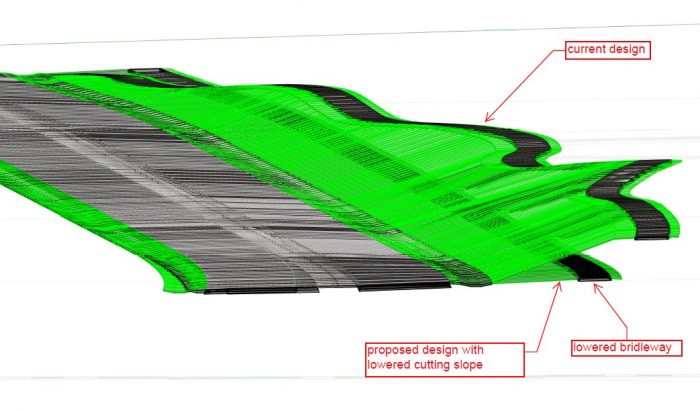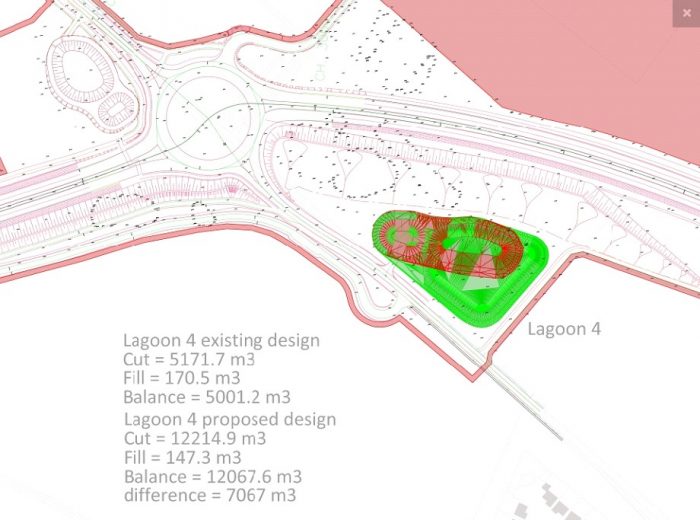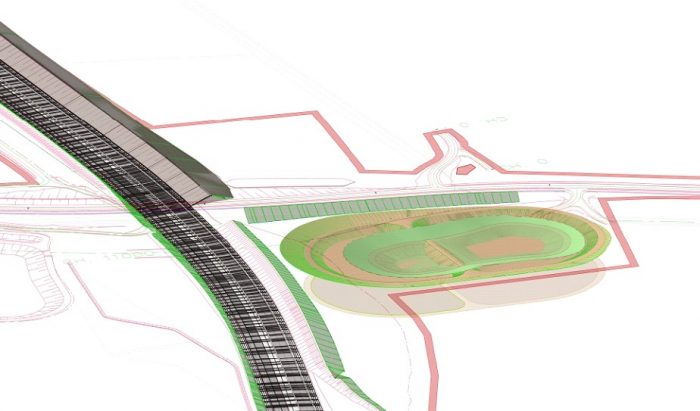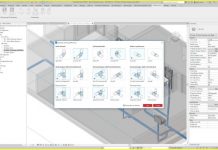The Norwich Northern Distributor Road scheme was designed with the earthworks in balance. The original design was carried out by Norfolk County Council based on a LIDAR survey of the route in 2006.
Following contract award, a topographical survey of the entire scheme was carried out (on foot, using GPS rovers) which highlighted that the ground level in the agricultural areas was approximately 160mm lower than assumed.
During the ECI phase of the project, BB employed a specialist consultant (Opsis) to produce the earthworks schedule. This schedule was re-calculated based on the latest OGL survey and it resulted in a 254,000 cu.m general fill deficit.
Based on tender general fill import rates from the open market, this would increase the cost of the works by £7.62m if the Client had to import the fill.
In order to solve the problem a series of joint workshops with the Client’s team were convened, at which mitigation options were discussed. These options included enlarging drainage lagoons (25No on the scheme), widening road cuttings, constructing bridge embankments from a Class 1/2 ‘core’ with landscaping fill on the flanks and reducing the back slope on landscape bunds.
3D Modelling as a solution
Martin Young was contracted through Cassidy Forsythe Ltd to carry out a 3D modelling exercise to identify areas where additional volumes of general fill could be found and to quantify the volumes of fill available associated with each proposed change.
All proposed changes had to be referred to the Client (for design review) and also Mott Macdonald (the Client’s appointed Environment Manager) to review and determine if they were ‘de-minimis’ changes against the DCO. Anything which wasn’t, was discounted for programme reasons (6 month lead time quoted for DCO changes, and possible legal challenge).
A running total of the quantities was kept using a simple Excel spreadsheet (additions / omissions vs the Earthworks Schedule) and the exercise was pursued until the majority of options had been exhausted and the earthworks were back to near a balance. This was a lot quicker than going back to Opsis to produce a revised earthworks schedule during the process.
In order to speed up the design process, Martin Young incorporated the proposed changes into the Client’s MX model and then we issued it to NCC for review and acceptance (with a clear statement on design liability). NCC then issued it back to Balfour Beatty for construction, under an instruction.
Example screenshots of the modelling exercise are shown below



This modelling exercise directly saved the project approximately £7.5m













